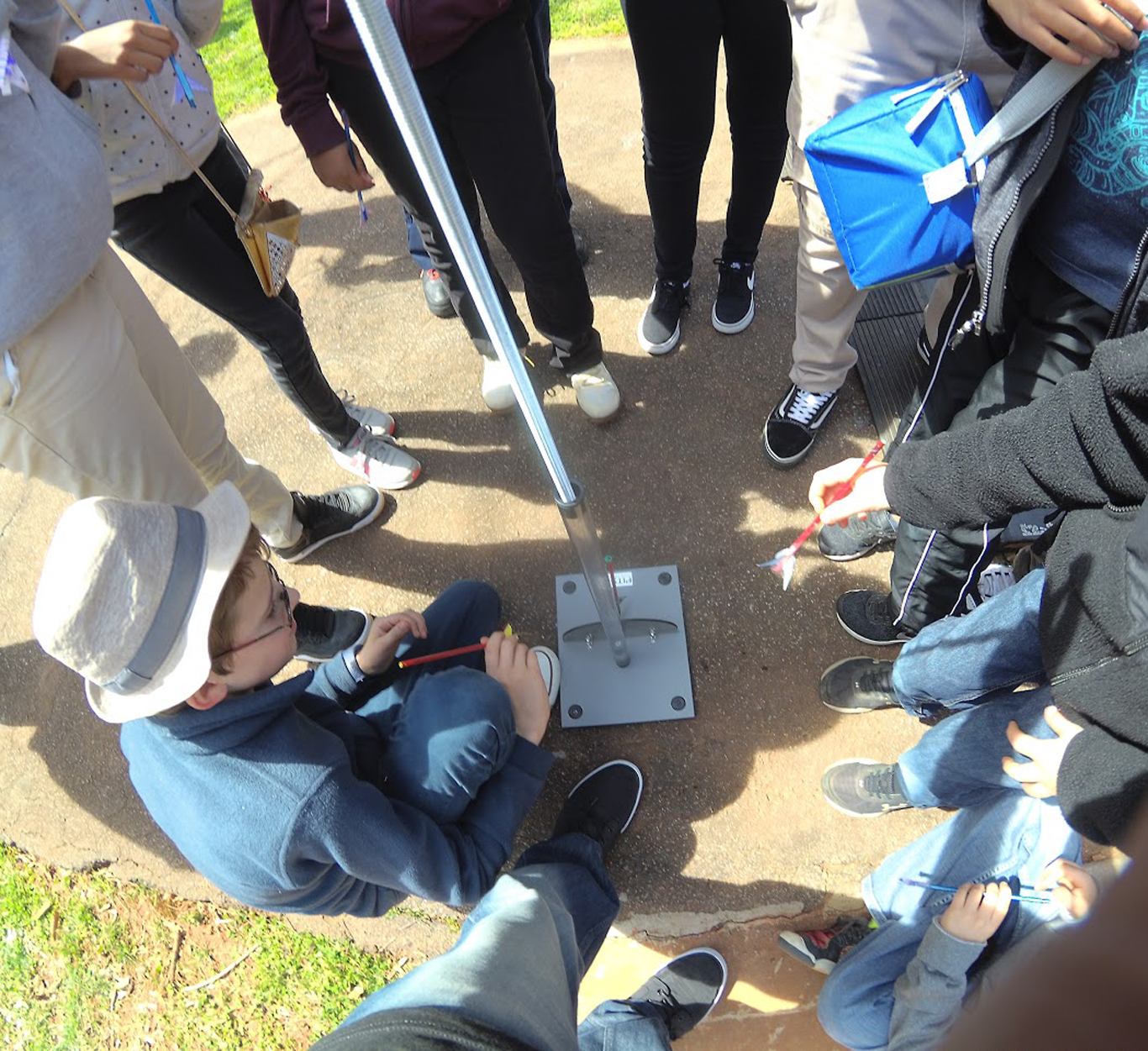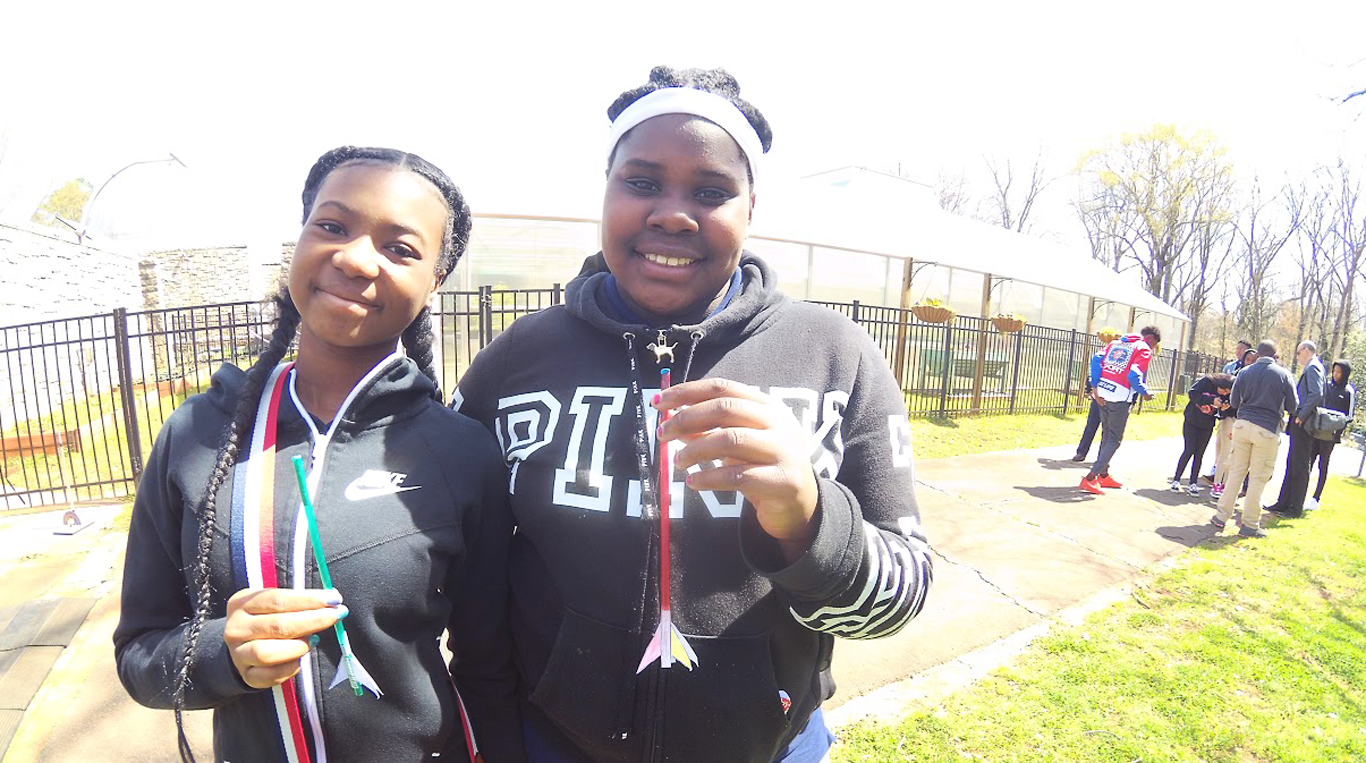Editors Note: This blog was written by Pitsco TAG Teacher and NASA Space Ambassador David Lockett. He shares an inside look at the what and why of this unique and important event.
Tomorrow’s jobs are in space! But future ready begins now! In mid-March, as part of the Atlanta Science Festival, the Fernbank Science Center opened its doors to the community for the Astronaut Job Fair (AJF) as means to promote the importance of science, technology, engineering, arts, and math (STEAM). The daylong event was designed like a real professional job fair and career day. A diverse group of Atlanta’s students were directed through training to foster career-building skills while engaging with a staff of top space industry professionals.
Author, astronaut teacher, and AJF director Mike Mongo says, “When I share with grown-ups ‘tomorrow’s jobs are in space,’ I face outright skepticism. . . . When I explain to young students that tomorrow’s jobs are in space – and they can even invent the jobs they want – it’s open enthusiasm and excitement. The feeling is as if I just gave them actual tickets to be on the next spaceship out. And in a way that’s what we’re doing with Astronaut Job Fair: The space industry is now a lot more than governmental space agencies – it’s SpaceX, Virgin Galactic, ULA, Boeing, Lockheed-Martin, Blue Origin, Planet, and more” (Medium).

Out-of-This-World Careers
At the Astronaut Job Fair, possible careers like space YouTuber, space plumber, space athlete, even space Fortnite were presented for students to consider and explore. Can you imagine?! It’s really not out of this world. Many of these STEM/STEAM jobs that we know now will change or might not exist, and many could take place beyond Earth’s surface. Exposing students with a flair for science, tech, engineering, math, or to some extent all of them, to these possibilities NOW at an earlier age allows them to be inspired and encouraged to become invested in STEM and genuinely pursue space-themed college and career paths.
Student attendees had the chance not only to interact with professionals in the STEM and education fields but also to collaborate and socialize with like-minded students and participate in a few volunteer activities in the community. All of which can help students develop the necessary 21st-century skills and build résumés as they look toward a future career.
Hands-On Learning Takes Off Like a Rocket
There were several hands-on activities to get students immersed in the terminology and concepts of space, including learning things like the angle of trajectory, components of projectile motion, and how to apply basic graphing and data interpretation skills. Students designed, built, and shot off their own rockets using Pitsco’s Straw Rocket Launcher. Many students took part in every aspect of rocket design, and it’s building self-confidence in them and fostering a feeling of “I can redesign or improve a solution; I can build a prototype.”
Students created and launched a straw rocket that contains a straw, a nose cone made of modeling clay, and paper fins. For the hypothesis, students tested how the length of a rocket affects its range of flight. Students tested with a short and long rocket. Each group also made different fin designs. After the launch, students reviewed the data to determine how the fins affected the flight. The experiment tied into Newton’s three laws of motion. “Everything about the experiment is engaging, from the hands-on learning to the design was fun,” said Matthew Torres, Dekalb, GA, middle school student. It reinforced that whether a rocket makes it to the Moon, or barely makes it a mile, all depends on just a few variables.

“STEM is important because it shows students of all ages how science, technology, engineering, and math work in their everyday lives. [At AJF,] students have an opportunity to see some of the 21st-century technology that is used in space exploration jobs and will also be a part of their future job training. Plus, it was fun, with many hands-on opportunities for our students to interact with this new technology,” said Jonathan Terra, Dekalb science teacher.
Why This Matters
Technological progress is influencing nearly every industry, and space is no exception. This rise in technology requires that we teach our students not only how to use and take advantage of relevant technologies so they can stay competitive in this new market but also how to build the necessary 21st-century skills such as creativity, innovation, collaboration, and more. Additionally, introducing students to the engineering design process is critical for ensuring that our students are ready for our world now and the job market and life they’ll live and work into.
Events like the Astronaut Job Fair are a fast-paced way to inspire interest. But interest and excitement for STEM/STEAM can be fostered daily or weekly in our classrooms too. Using devices such as rocket launchers, teachers can show students how astronomy-based projects can enhance learning and improve the day-to-day experience of all students, promoting curiosity and enhancing physics-based learning.
Space is for everybody. And so is STEM/STEAM.
As educators, we want all students to pursue their specific interests and hobbies. We can help motivate students to find their way, and be prepared for success, by providing them a variety of opportunities.

TOPICS: IDEAS & INSPIRATION, Science, Technology, STEM, Careers, 21st Century Skills, STEAM, Workforce Development



